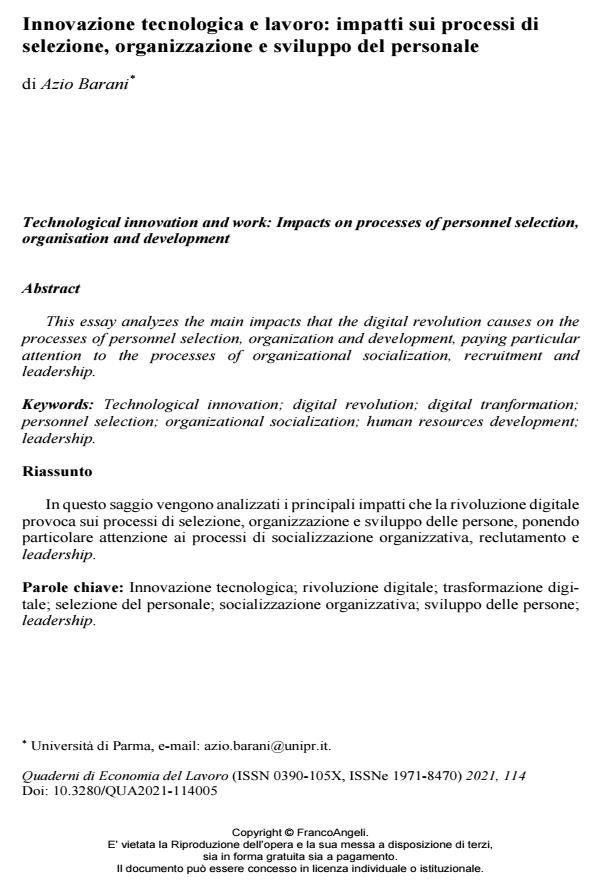Technological innovation and work: Impacts on processes of personnel selection, organisation and development
Journal title QUADERNI DI ECONOMIA DEL LAVORO
Author/s Azio Barani
Publishing Year 2023 Issue 2021/114
Language Italian Pages 42 P. 129-170 File size 416 KB
DOI 10.3280/QUA2021-114005
DOI is like a bar code for intellectual property: to have more infomation
click here
Below, you can see the article first page
If you want to buy this article in PDF format, you can do it, following the instructions to buy download credits

FrancoAngeli is member of Publishers International Linking Association, Inc (PILA), a not-for-profit association which run the CrossRef service enabling links to and from online scholarly content.
This essay analyzes the main impacts that the digital revolution causes on the processes of personnel selection, organization and development, paying particular attention to the processes of organizational socialization, recruitment and leadership.
Keywords: Technological innovation; digital revolution; digital tranformation; personnel selection; organizational socialization; human resources development; leadership.
Azio Barani, Innovazione tecnologica e lavoro: impatti sui processi di selezione, organizzazione e sviluppo del personale in "QUADERNI DI ECONOMIA DEL LAVORO" 114/2021, pp 129-170, DOI: 10.3280/QUA2021-114005